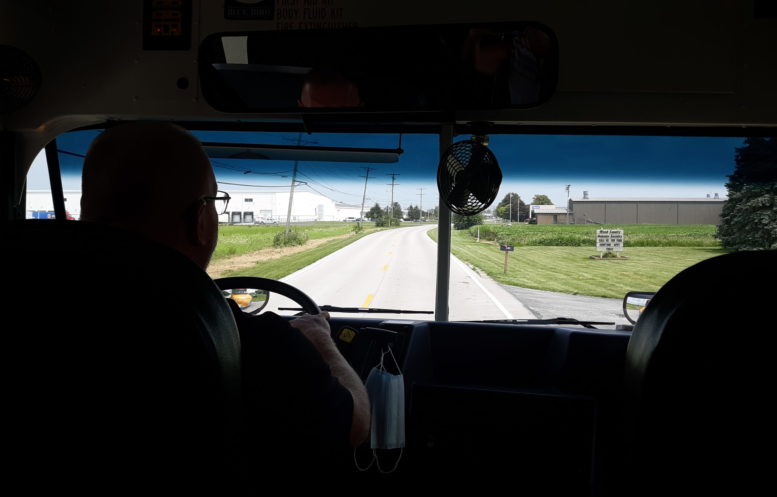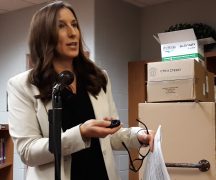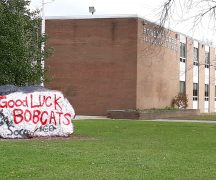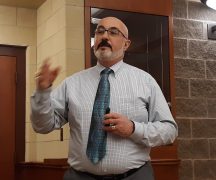By JAN LARSON McLAUGHLIN
BG Independent News
Big rig drivers are in demand at schools throughout the state. The hours are early. The kids can be noisy. The parents can be cranky. And, yes, youngsters occasionally lose their breakfast or lunch – vomit – along the way.
But the rewards of bus driving are plentiful, according to Toby Snow, transportation director for Bowling Green City Schools.
“Most people who do it absolutely enjoy it,” Snow said. “It’s a fantastic job.”
Yet there is a statewide shortage of school bus drivers.
“There isn’t a school district in the state of Ohio that isn’t looking for bus drivers,” Snow said – including Bowling Green City Schools.
Snow believes potential drivers are intimidated by the thought of driving a 42-foot bus, loaded with kids.
But today’s buses are not the same as those on the road 20 or more years ago.
“Buses are so easy to drive and easy to maneuver,” Snow said.
“Years ago, it would take a country mile to get them to turn,” he said. “Now it’s no more complicated than driving a car. You just have to get over that fear.”
The drivers no longer have to arm wrestle the lever to get the bus door open. There’s a button to push for that now.
Buses are equipped with air ride seats and suspension – making the trip less bumpy for the drivers and the students.
They have heaters that self-start during cold weather before the routes begin.
“With older buses, you had to drive half the way to Milton Center before they heated up,” Snow said.
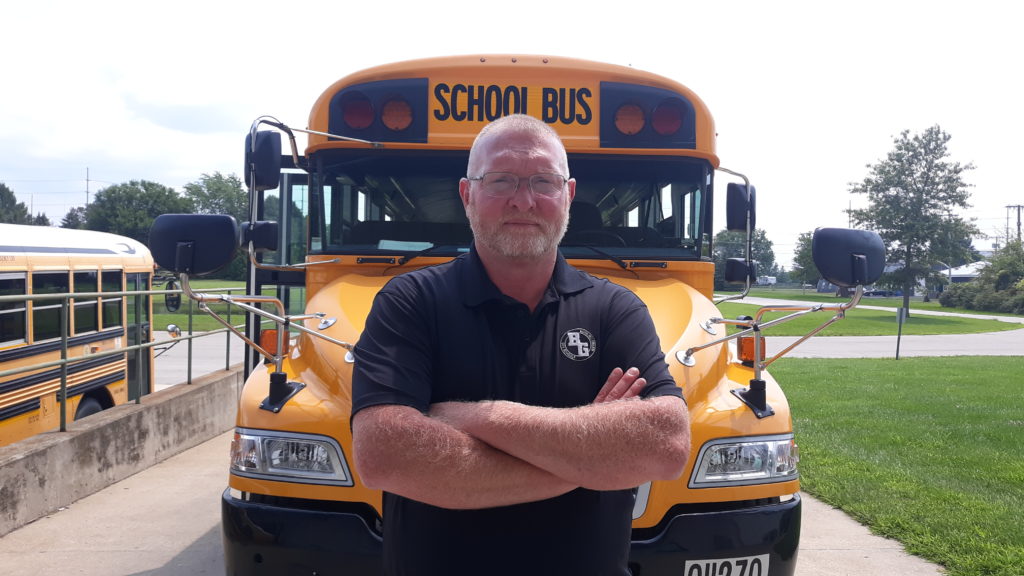
As for hot days, the buses now have tinted windows – but still no air conditioning. Adding air conditioning would cost an estimated $9,000 more for each of the district’s buses that already carry a price tag of about $92,000 each and last an average 15 years. One bus for special needs students is air conditioned.
As for the passengers, 99.9% of the students pose no problems.
“The kids are manageable,” Snow said. “After a couple discussions between me and the principals, the kids understand.”
But there is one non-negotiable trait that all bus drivers must have.
“If you don’t like kids, this is not the job for you,” Snow said.
Many school bus drivers form relationships with their passengers. Some drive the same routes for years – transporting multiple generations of the same family.
“I’ve got drivers who invest time with their kids – and go to their athletic events,” he said. “It’s a rewarding job.”
Other drivers, like Jerry Anderson, get the bus route list before each school year and make personal visits to each student’s home to introduce himself and talk with the families.
School bus manufacturers promote the vehicles as able to carry three students per seat – a total of 78. But the reality is that only the smallest elementary students can squeeze in that tight.
“Anytime a bus leaves town, there are no more than 50 students on a bus,” Snow said.
Some things have not changed on school buses. “Students need to keep it to a low roar so drivers can concentrate,” Snow said.
The two fingers up signal still alerts the passengers to be quiet at a railroad crossing.
Kids still get sick during bus rides. To prevent a chain effect from the odor, bus drivers are equipped with a raspberry smelling substance to cover it.
And bus drivers still encounter distracted drivers or motorists willing to take chances to avoid getting behind a school bus making frequent 10- to 15-second stops.
“Some don’t understand the law,” Snow said. “Then we’ve got people who pull out in front of us because they don’t want to get behind us.”
To keep an eye on problems while the driver is focusing on the road, buses are equipped with three cameras inside and one outside.
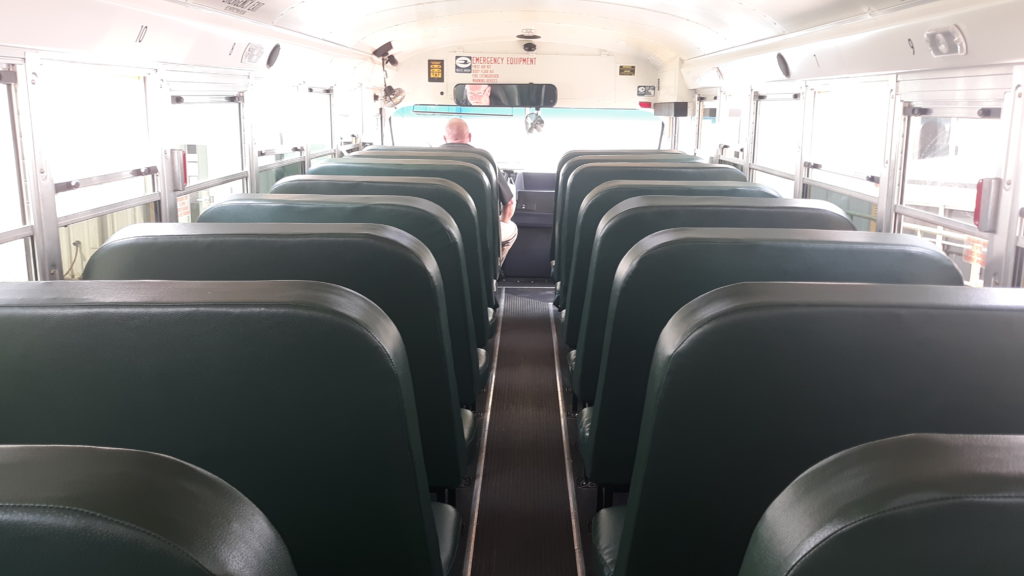
School bus drivers are also some of the first people venturing out of snowy roads in the winter time. Many start their morning routes around 5:50 a.m. They are back at it again when school is out. They are the first school employees to greet students in the morning, and the last to get them home safely at the end of the day.
Of the 2,600 or so students eligible for bus rides, the district averages 1,420 passengers each morning. That includes students who attend Penta Career Center, BG Christian Academy, St. Aloysius School, the Montessori School, and St. Louis Elementary.
On bad weather days, Superintendent Francis Scruci and Snow start out around 4:30 a.m. to access the roads. They try to determine by 5:15 a.m. if school will start as scheduled, be delayed, or canceled.
Snow tells his drivers to not rush on the roads. “Just take your time,” he says.
Beginning bus drivers with Bowling Green City Schools earn $17.64 an hour, and get full-time health benefits if they work between 4.5 and 6 hours a day. Drivers not wanting to commit to a regular route can sign up as a substitute. The gig is great for retirees, Snow said.
Extra-curricular events and field trips provide more time behind the wheel.
“There’s plenty of opportunity to get extra hours,” Snow said.
Drivers must meet several qualifications, including getting their Class B Commercial Drivers License. They must pass a physical, drug screening, and background checks by the FBI and Bureau of Criminal Identification and Investigation.
The training takes about 15 weeks, and at the end the drivers must pass a pre-trip inspection covering 78 items on the bus.
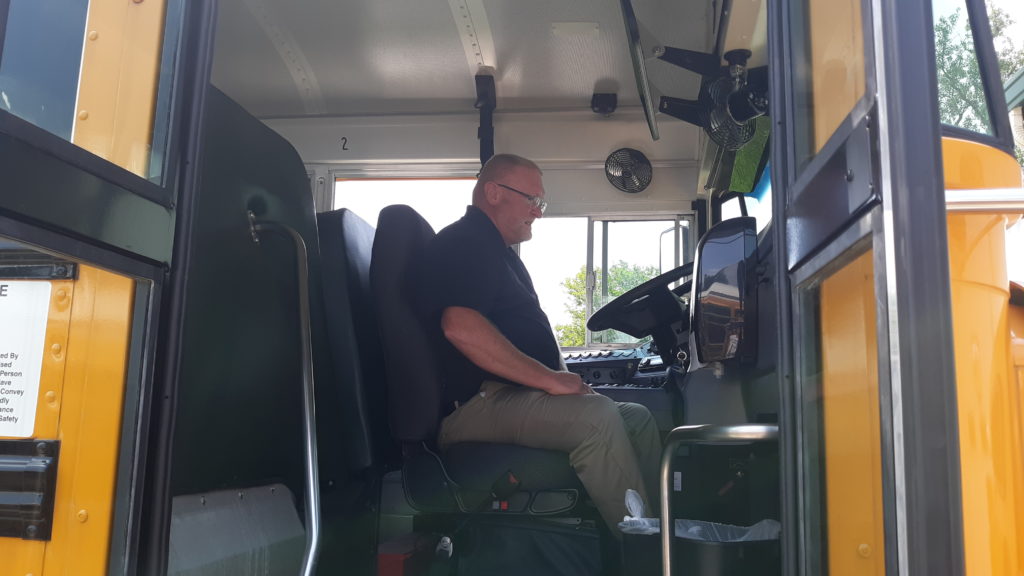
Due to the lack of bus drivers and substitutes, Snow and the district’s two bus mechanics are often found behind the wheel on bus routes. Snow said he could mix routes so fewer drivers are needed, but that means longer rides for students, and messes up families who are accustomed to their pickup and dropoff times.
The district is trying to come up with creative ways to attract potential bus drivers. In the past, the district has plastered a big sign on the side of a bus in front of the high school.
Anyone interested in becoming a bus driver should contact Snow at 419-354-8509.

